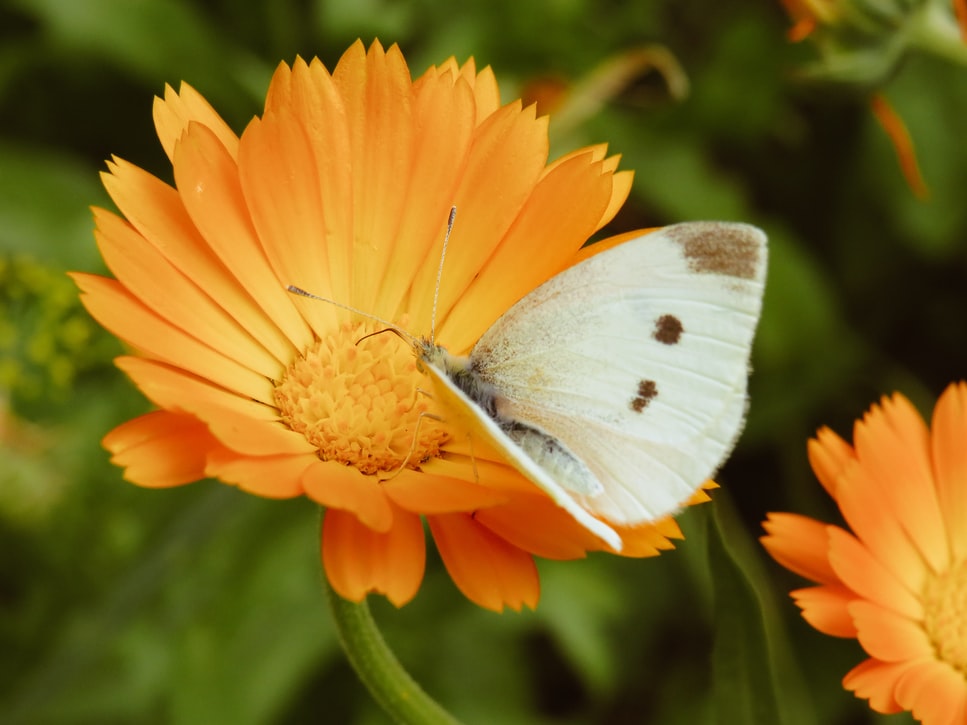Everything is blooming here in Southern Oregon and the herbs I planted so carefully this spring are ready for harvest. Some of the herbs to harvest right now are Calendula, Tulsi and Spilanthes. The more frequently that you harvest from these herbs the more they will flower, which means a bigger yield for your tea and medicine cabinet.

Calendula and Spilanthes are harvested in the same manner. Simply pop off the flower heads with your fingers and spread them out on whatever your preferred drying rack is. Try to have just one layer of flowers to make sure all the material dries. I have a hanging dry rack made of mesh and also have some easily built ones made from scrap wood and window screen.

Tulsi is slightly more labor intensive to harvest. Using garden clippers cut the Tulsi stems off just above the growth nodes as you would culinary basil. The growth nodes are where the plant branches and once you clip the center stalk out the parts that remain will grow and become the flowers that you will harvest next. Make sure you cut just above the node so that the plant can continue to grow and you do not end up with a bunch of woody stems. You can dry Tulsi flat on the same screens as the Calendula and Spilanthes but I like to dry mine in little bunches. I simply tie 5-10 of the stems together with twine and then hang these bundles upside down to dry. Once they are dry these bundles are very easy to garble down into loose leaf herb. Both the leaf and flower are used.
The best time of day to harvest most of your herbs is in the morning before the essential oils and resins warm up with the heat of the summer sun. Make sure to dry your herbs in a relatively cool, dark and dry space. Right now our guest bedroom closet is full of drying herbs! I also like to put a fan on to add some air flow. If you do not have racks you can also dry your herbs in paper bags.

All of these plants can be used fresh. Spilanthes can be made into a fresh tincture or you can chew a flower as you pick them. They are very effervescent and the bioactive compound Spilanthol will make you salivate a lot! A fun way to get some extra oral hygiene in as Spilanthes helps bring circulation to the gums as well has having a tonic affect on the gum tissue. Hence the nickname toothache plant.
Calendula can be used as a bright edible addition to salads and can also be made into a succus. Simply blend the flower heads with a little water and then strain out the plant material. The resulting liquid can be used to topically treat various skin ailments like rashes, cuts and abrasions.
Tulsi also known as Holy Basil is excellent to use as a culinary herb. It is used in soups and stir fries in Thailand and I have made some nice Chili pepper and Tulsi pastes for cooking. It has a more floral flavor then pesto type basils. It is a common Ayurvedic herb and generally revered for its adaptogenic properties. I put it dry in almost all of my winter teas but it also makes a delicious sun tea.
Next time you harvest your herbs add about a handful of fresh calendula and about 4 sprigs of Tulsi to a gallon of water. Leave it in the sun for a few hours and then enjoy over ice. It will surely be very refreshing in the afternoon.


Suzanne goldenberg
Thank you – I had so much tulsi growing I left a lot to dry on the stem It turned brown but still smells sweet Is it too late to harvest and use for tea once leaves are brown ?